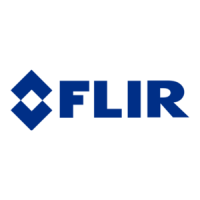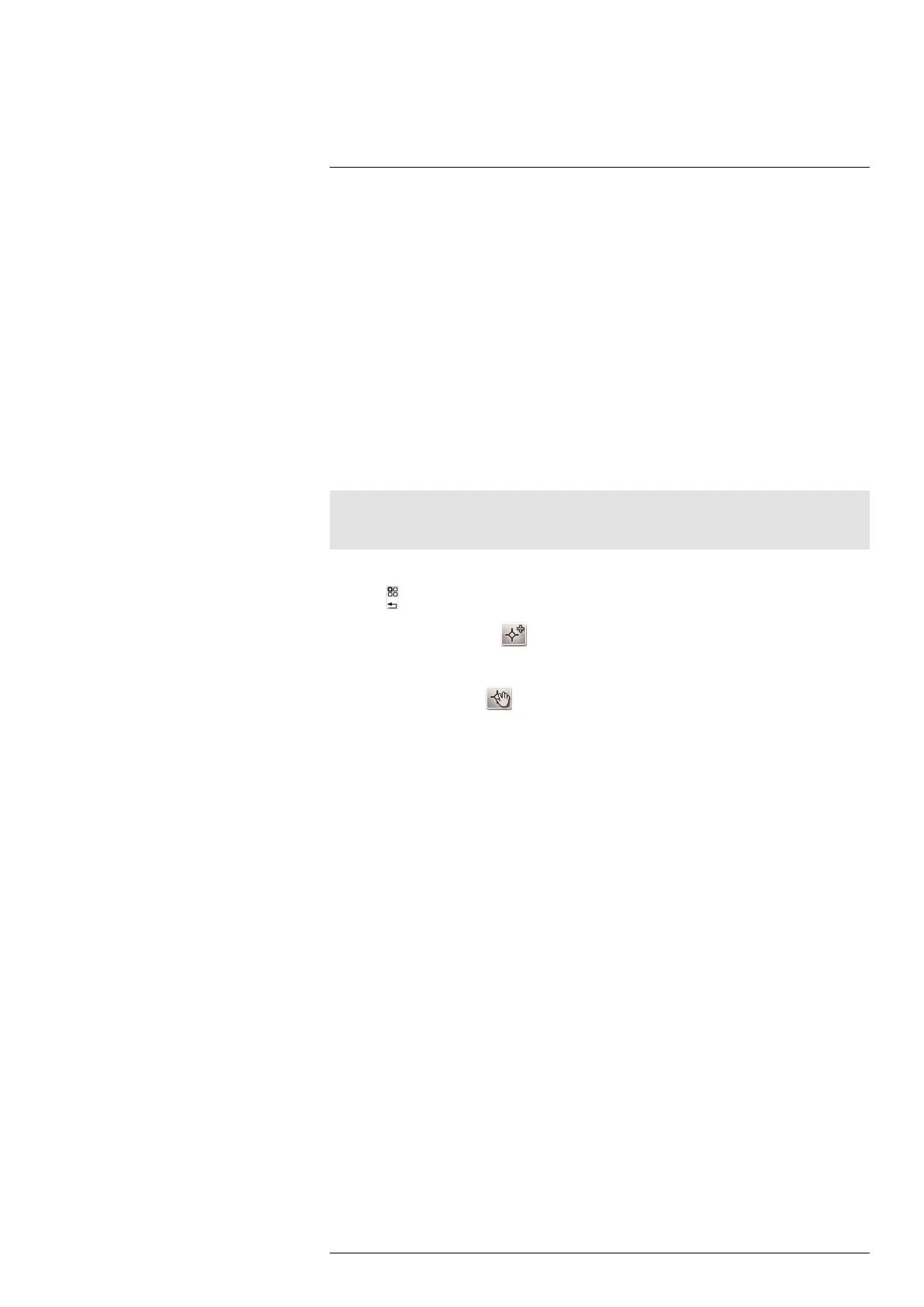Working with alarms and
isotherms
19
19.1 Measurement alarms
19.1.1 General
You can make the camera trigger an audible alarm when certain measurement condi-
tions are met.
19.1.2 Types of alarm
You can choose between the following alarm types:
• Above: Triggers an alarm when a temperature is above the preset alarm temperature.
• Below: Triggers an alarm when a temperature is below the preset alarm temperature.
19.1.3 Alarm signals
When an alarm is triggered, an audible alarm signal will sound (a ‘beep’).
19.1.4 Procedure
Note
This procedure is an example procedure about setting up an alarm for a spotmeter temperature. Set-
ting up alarms for other measurement tools works in a similar way.
Follow this procedure:
1. Push
to display the menu system.
2. Use the joystick to go to
.
3. Push the joystick to display a submenu.
4. Use the joystick to go
.
5. Push the joystick to display a list of active measurement tools.
6. Select Spot and push the joystick. This will display a Spot menu.
7. On the Spot menu, enable Alarm.
8. On the Spot menu, go to Alarm settings and push the joystick. This display an Alarm
settings menu.
9. On the Alarm settings menu, set the following:
• Condition: The condition that triggers the alarm. Applicable values are Above or
Below.
• Threshold: The temperature value that shall be the critical condition when an
alarm is triggered or not. The unit is degrees Celsius or degrees Fahrenheit.
• Beep: The audible alarm signal.
19.2 Building isotherms
19.2.1 General
The camera features isotherm types that are specific to the building trade. You can make
the camera trigger the following types of isotherms:
• Humidity: Triggers when the camera detects a surface where the relative humidity ex-
ceeds a preset value.
• Insulation: Triggers when there is an insulation deficiency in a wall.
19.2.2 About the Humidity isotherm
To detect areas with potential moisture problems, you can use the Humidity isotherm.
You can set the relative humidity above which the isotherm will colorize the image.
#T559598; r. AB/ 9443/9443; en-US
50

